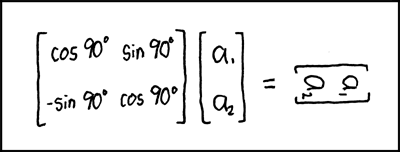In my capstone class for future secondary math teachers, I ask my students to come up with ideas for engaging their students with different topics in the secondary mathematics curriculum. In other words, the point of the assignment was not to devise a full-blown lesson plan on this topic. Instead, I asked my students to think about three different ways of getting their students interested in the topic in the first place.
I plan to share some of the best of these ideas on this blog (after asking my students’ permission, of course).
This student submission comes from my former student Derek Skipworth. His topic, from Geometry: introducing the two-column, statement-reason paradigm of geometric proofs.

A. Applications – How could you as a teacher create an activity or project that involves your topic?
I would have the students get in groups and come up with 5-8 statements on one sheet of paper, numbering each one. This could be a statement about the weather, something that happened the day before, anything. My example would be “I wore a long sleeve shirt today”. After coming up with these statements, I would then have the students create reasons behind these statements on a separate sheet. For each statement, the students would have to ask “why…”. For my example, it might be that it was laundry day and it was my only clean shirt, or that it was cold outside. Upon generating all reasons behind each statement, I would then introduce the proof model.

B. Curriculum – How can this topic be used in your students’ future courses in mathematics or science?
The two-column, statement-reason paradigm is a system that can actually be used in all subjects. The idea behind it, giving a statement on the right and a reason on the right, can be applied to almost everything. For problem solving, you can work through an entire problem step by step and explain why you think that is the correct process. In a class such as Calculus, this could be used to help them memorize derivatives by doing the problem on the left and listing what “tool” they used for each step of the process. Even for something like social studies, this process could be adapted into a tool similar to the Cornell Notes (http://coe.jmu.edu/LearningToolbox/cornellnotes.html). In this process, you use the two-column approach. On the left, you list your main ideas, while the right column “explains” what you know about the idea.

E. Technology – How can Technology be used to effectively engage students with this topic?
I had issues tying this topic to a third question. While it’s a good topic, its more of a process than an actual concept. This would actually qualify as an engage activity, slightly different to the one mentioned above, but I would see it working better as a take-home assignment than an in-class one. The assignment would be to use YouTube and pull up a video that piques their interest. Obviously, it needs to be school-appropriate. This could be their favorite music video, a funny video of cats, whatever it is would work. They would write the name of the video at the top and provide a link to the video if possible. Then, they would take the paper and fold it in half, hot-dog style. On the left, they list the names of videos on the suggested pane to the right, in order as they appear. On the right, they would add comments about how that video was related to the video they chose and why it was in that order. The idea is that this should take a bit of thinking since often times the videos appear to be randomly added to that queue. This would reinforce the model while hopefully developing a better idea of how a website they are familiar with operates. Though this could be done with any search engine as well, I feel those are just too similar to offer any “investigative” work for the students.

Seen above, one would likely suspect that a Florence and the Machine video would pull up various other Florence videos in the top 9; however, the snapshot shows that this is not the case. We see that most results have nothing to do with Florence. We see that there are a few matches based on the KEXP live performance. When listening to some others, it might be reason to believe they were in the queue not only based on a performance, but also because the genres are very similar. That would be my main conclusion about Gotye’s music video being included in the list: it’s a very popular song and is in the same genre as Florence.







